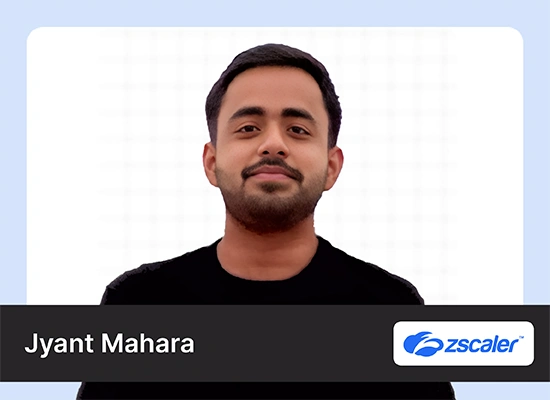Introduction
We have said au revoir to the Olympic Games Paris 2024, and the next will be held after 4 years, but the development by Google DeepMind may signal a new era in sports and robotics development. I recently came across a fascinating research paper (Achieving Human-Level Competitive Robot Table Tennis) by Google DeepMind that explores the capabilities of robots in table tennis. The study highlights how the advanced robot can play against human opponents of various skill levels and styles; the Robot features 6 DoF ABB 1100 arms mounted on linear gantries and achieves an impressive win rate of 45%. It’s incredible to think about how far robotics has come!
It’s only a matter of time before we witness a Robot Olympics, where nations compete using their most advanced robotic athletes. Imagine robots racing in track and field events or battling it out in competitive sports, showcasing the pinnacle of artificial intelligence in athletics.
Picture this: you are witnessing a robot, with the precision and agility of an experienced player, skillfully playing table tennis against a human opponent. What would your reaction be? This article will discuss a groundbreaking achievement in robotics: creating a robot that can compete at an amateur human level in table tennis. This is a significant leap towards achieving human-like robotic performance.

Overview
- Google DeepMind’s table tennis robot can play at an amateur human level, marking a significant step in real-world robotics applications.
- The robot uses a hierarchical system to adapt and compete in real time, showcasing advanced decision-making abilities in sports.
- Despite its impressive 45% win rate against human players, the robot struggled with advanced strategies, revealing limitations.
- The project bridges the sim-to-real gap, allowing the robot to apply learned simulation skills to real-world scenarios without further training.
- Human players found the robot fun and engaging to play against, emphasizing the importance of successful human-robot interaction.
Table of contents
The Ambition: From Simulation to Reality
Barney J. Reed, Professional Table Tennis Coach, said:
Truly awesome to watch the robot play players of all levels and styles. Going in our aim was to have the robot be at an intermediate level. Amazingly it did just that, all the hard work paid off.
I feel the robot exceeded even my expectations. It was a true honor and pleasure to be a part of this research. I have learned so much and am very thankful for everyone I had the pleasure of working with on this.
The idea of a robot playing table tennis isn’t merely about winning a game; it’s a benchmark for evaluating how well robots can perform in real-world scenarios. Table tennis, with its rapid pace, needs for precise movements, and strategic depth, presents an ideal challenge for testing robotic capabilities. The ultimate goal is to bridge the gap between simulated environments, where robots are trained, and the unpredictable nature of the real world.
This project stands out by employing a novel hierarchical and modular policy architecture. It’s a system that isn’t just about reacting to immediate situations and understanding and adapting dynamically. Low-level controllers (LLCs) handle specific skills—like a forehand topspin or a backhand return—while high-level controllers (HLC) orchestrate these skills based on real-time feedback.
The complexity of this approach cannot be overstated. It’s one thing to program a robot to hit a ball; it’s another to have it understand the context of a game, anticipate an opponent’s moves, and adapt its strategy accordingly. The HLC’s ability to choose the most effective skill based on the opponent’s capabilities is where this system really shines, demonstrating a level of adaptability that brings robots closer to human-like decision-making.

Also read: Beginners Guide to Robotics With Python
Breaking Down the Zero-Shot Sim-to-Real Challenge
One of the most daunting challenges in robotics is the sim-to-real gap—the difference between training in a controlled, simulated environment and performing in the chaotic real world. The researchers behind this project tackled this issue head-on with innovative techniques that allow the robot to apply its skills in real-world matches without needing further training. This “zero-shot” transfer is particularly impressive and is achieved by an iterative process where the robot continuously learns from its real-world interactions.
What’s noteworthy here is the blend of reinforcement learning (RL) in simulation with real-world data collection. This hybrid approach allows the robot to progressively refine its skills, leading to an ever-improving performance grounded in practical experience. It’s a significant departure from more traditional robotics, where extensive real-world training is often required to achieve even basic competence.
Also read: Robotics and Automation from a Machine Learning Perspective
Performance: How Well Did the Robot Actually Do?

In terms of performance, the robot’s capabilities were tested against 29 human players of varying skill levels. The results? A respectable 45% match win rate overall, with particularly strong showings against beginner and intermediate players. The robot won 100% of its matches against beginners and 55% against intermediate players. However, it struggled against advanced and expert players, failing to win any matches.
These results are telling. They suggest that while the robot has achieved a solid amateur-level performance, there’s still a significant gap in competing with highly skilled human players. The robot’s inability to handle advanced strategies, particularly those involving complex spins like underspin, highlights the system’s current limitations.
Also read: Reinforcement Learning Guide: From Fundamentals to Implementation
User Experience: Beyond Just Winning

Interestingly, the robot’s performance wasn’t just about winning or losing. The human players involved in the study reported that playing against the robot was fun and engaging, regardless of the match outcome. This points to an important aspect of robotics that often gets overlooked: the human-robot interaction.
The positive feedback from users suggests that the robot’s design is on the right track in terms of technical performance and creating a pleasant and challenging experience for humans. Even advanced players, who could exploit certain weaknesses in the robot’s strategy, expressed enjoyment and saw potential in the robot as a practice partner.
This human-centric approach is crucial. After all, the ultimate goal of robotics isn’t just to create machines that can outperform humans but to build systems that can work alongside us, enhance our experiences, and integrate seamlessly into our daily lives.
You can watch the full-length videos here: Click Here.
Also, you can read the full research paper here: Achieving Human-Level Competitive Robot Table Tennis.
Critical Analysis: Strengths, Weaknesses, and the Road Ahead

While the achievements of this project are undeniably impressive, it’s important to analyze the strengths and the shortcomings critically. The hierarchical control system and zero-shot sim-to-real techniques represent significant advances in the field, providing a strong foundation for future developments. The ability of the robot to adapt in real-time to unseen opponents is particularly noteworthy, as it brings a level of unpredictability and flexibility crucial for real-world applications.
However, the robot’s struggle with advanced players indicates the current system’s limitations. The issue with handling underspin is a clear example of where more work is needed. This weakness isn’t just a minor flaw—it’s a fundamental challenge highlighting the complexities of simulating human-like skills in robots. Addressing this will require further innovation, possibly in spin detection, real-time decision-making, and more advanced learning algorithms.
Also read: Top 6 Humanoid Robots in 2024
Conclusion
This project represents a significant milestone in robotics, showcasing how far we’ve come in developing systems that can operate in complex, real-world environments. The robot’s ability to play table tennis at an amateur human level is a major achievement, but it also serves as a reminder of the challenges that still lie ahead.
As the research community continues to push the boundaries of what robots can do, projects like this will serve as critical benchmarks. They highlight both the potential and the limitations of current technologies, offering valuable insights into the path forward. The future of robotics is bright, but it’s clear that there’s still much to learn, discover, and perfect as we strive to build machines that can truly match—and perhaps one day surpass—human abilities.
Let me know what you think about Robotics in 2024…
Frequently Asked Questions
Ans. It’s a robot developed by Google DeepMind that can play table tennis at an amateur human level, showcasing advanced robotics in real-world scenarios.
Ans. It uses a hierarchical system, with high-level controllers deciding strategy and low-level controllers executing specific skills, such as different types of shots.
Ans. The robot struggled against advanced players, particularly with handling complex strategies like underspin.
Ans. It’s the challenge of applying skills learned in simulation to real-world games. The robot overcame this by combining simulation with real-world data.
Ans. Regardless of the match outcome, players found the robot fun and engaging, highlighting successful human-robot interaction.





